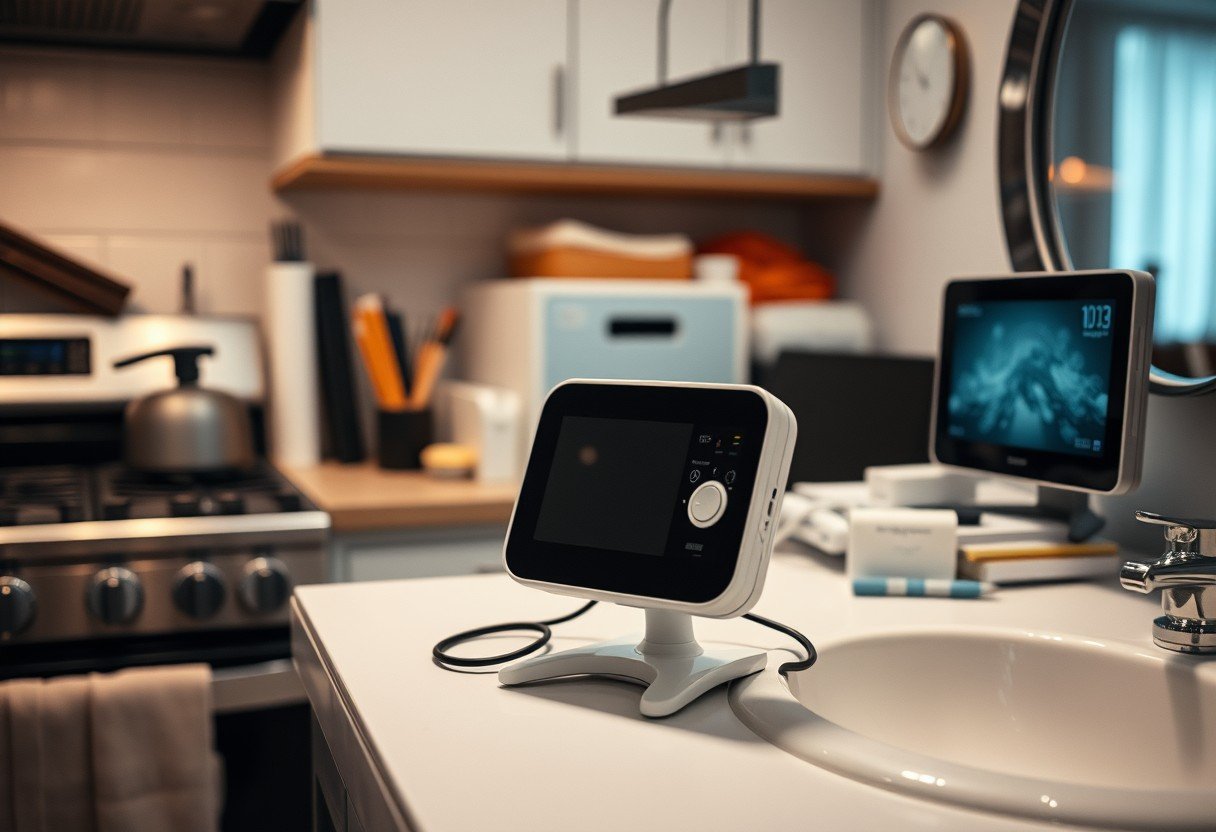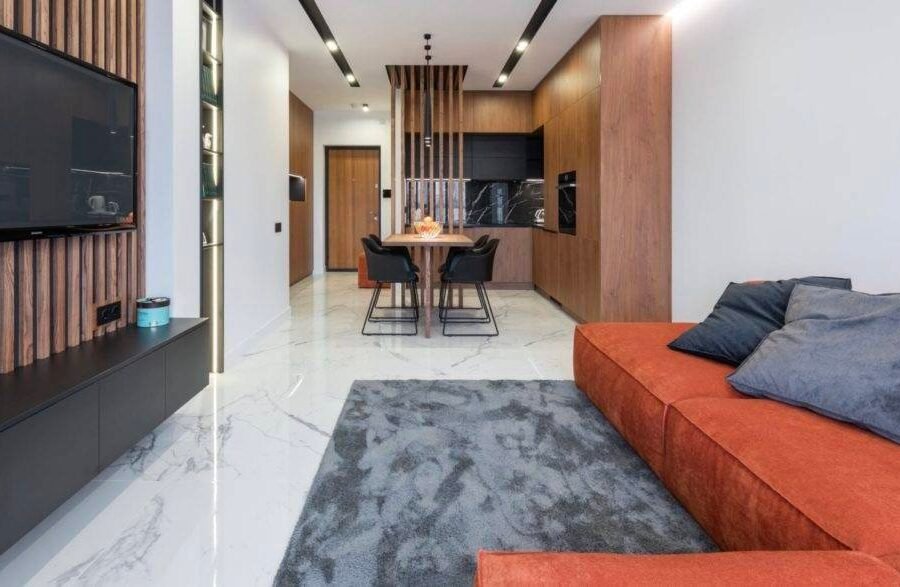Choosing where to put your baby monitor seems simple, but its location is critical for your child’s safety and your peace of mind. Improper placement can create serious risks, from electrical hazards to poor signal quality, defeating the monitor’s purpose. Understanding the worst spots for a baby monitor helps you create a secure environment where you can reliably keep a watchful eye on your little one, ensuring both safety and effective surveillance.
Critical Places to Avoid for Your Baby Monitor
Many parents assume any high corner will do, but certain locations can compromise the monitor’s function or even endanger your baby. Placing a monitor in the wrong spot can lead to damaged equipment or, more seriously, put your child at risk. It is vital to be mindful of the immediate environment where you set up the device.
Never place a monitor directly inside the crib or bassinet. This is the most dangerous mistake, as the device and its cords can pose a serious suffocation or strangulation hazard. Even wireless monitors can be a choking risk if a curious baby gets their hands on them.
To ensure maximum safety and performance, steer clear of these specific areas:
- Bathrooms: The high humidity and moisture can permanently damage the monitor’s electronic components and create an electrical hazard.
- Windowsills: Direct sunlight can cause the monitor to overheat and can degrade the plastic over time. The glare can also ruin the video quality, making it hard to see your baby clearly.
- Near Other Electronics: Placing a monitor too close to Wi-Fi routers, cordless phones, or microwaves can cause signal interference, leading to a dropped connection when you need it most.
High-traffic areas like busy hallways are also poor choices. Constant foot traffic increases the risk of the monitor being accidentally knocked over, which could damage the device or startle your baby.
Understanding the Hidden Risks of Poor Placement
The dangers of improper baby monitor placement go beyond a poor video feed. Physical safety hazards are a primary concern that all parents must address. A poorly secured monitor can fall into the crib, and its cords can be a significant threat.
Loose or dangling cords can pose a strangulation hazard for infants who are mobile. As soon as your baby can roll, crawl, or pull themselves up, they can reach things you thought were safely out of the way. Always ensure that any cords are at least three feet away from the crib and secured tightly to the wall using cord clips or covers.
Furthermore, placing a monitor in a hard-to-reach spot, like on a very high shelf, can be a problem in an emergency. If you need to quickly turn it off or adjust it, you don’t want to be fumbling for a step stool. Accessibility is key for quick responses.
Protecting Your Family’s Privacy and Data
In today’s connected world, privacy is a major concern with any smart device, and baby monitors are no exception. Wi-Fi-enabled monitors can be vulnerable to hacking if not properly secured. Placing the monitor in a spot with a broad view of the room can inadvertently capture private family moments, not just the baby in the crib.
Always consider the monitor’s field of view. Point it directly at the crib and limit its ability to see into other personal spaces. This simple step helps protect your family’s sensitive information from being exposed in the event of a security breach. Regularly updating the monitor’s firmware and using a strong, unique password for your Wi-Fi network are also essential steps to safeguard your privacy.
How to Prevent Electronic Interference and Signal Loss
A fuzzy picture or crackling audio can be a sign of electronic interference. Many baby monitors, especially older models, operate on the 2.4 GHz frequency band, which is the same frequency used by many other household devices. This electronic “noise” can disrupt your monitor’s signal.
Positioning your monitor away from these sources of interference is crucial for a reliable connection. If your monitor and receiver keep losing their link, try moving the monitor to a different part of the room, farther away from the cluster of home electronics. A weak or inconsistent signal creates dangerous gaps in monitoring.
Before you settle on a final spot, test the signal quality. Carry the parent unit with you to different rooms in your house where you are likely to be, like the living room or kitchen. Make sure you have a strong and stable connection from everywhere to avoid any surprises.
Tips for Finding the Perfect Spot for Your Monitor
Finding the right location involves balancing a clear view with safety. The ideal placement gives you a complete picture of your baby in their crib without introducing any risks. A wall-mounted position is often best, as it keeps the monitor secure and out of reach.
When mounting a monitor, aim for a height of at least 3-5 feet above the floor. This provides a bird’s-eye view of the entire crib, ensuring you can see your baby’s face and body clearly. Adjust the angle to eliminate any blind spots. This setup allows you to quickly notice any changes in your baby’s activity or position.
Here is a quick guide to help you decide on the best placement:
| Do This | Don’t Do This |
| Mount the monitor securely on a wall. | Place the monitor inside or on the edge of the crib. |
| Keep all cords at least 3 feet from the crib. | Let cords dangle where the baby can reach them. |
| Position it for a clear view of the entire crib. | Place it on an unstable surface or high shelf. |
| Test the signal strength throughout your home. | Place it near other electronics that cause interference. |
Common Mistakes Parents Make with Monitor Setup
Even with the best intentions, it is easy to make simple mistakes during setup. One of the most overlooked factors is room acoustics. The way sound travels in a room can greatly affect what you hear through the monitor. A room with lots of hard surfaces, like hardwood floors and bare walls, can create echoes that distort sounds.
Conversely, a room with thick carpets, heavy curtains, and lots of soft furniture can muffle your baby’s cries, potentially causing you to miss important cues. Try to place the monitor in a spot that minimizes background noise from things like air conditioners or fans, as this can mask the sounds you need to hear.
Failing to test the signal quality throughout your home is a common and risky oversight. Don’t just check it from the next room. Walk to the farthest corners of your house and even outside in your yard to understand the monitor’s true range and identify any potential dead zones before you need to rely on it.
Frequently Asked Questions
Why should I avoid placing a baby monitor too close to the crib?
Placing a monitor too close can be dangerous. The biggest risk is strangulation from cords if they are within reach. Additionally, lights or sounds from the monitor can disrupt your baby’s sleep, and some units can overheat, posing a safety concern.
Is it safe to place a baby monitor in the bathroom?
No, it is not recommended. Bathrooms have high humidity and moisture that can damage the monitor’s electronics and create an electrical hazard. It is better to place the monitor in a dry area just outside the bathroom door if you need to monitor during bath time.
What is the problem with placing a monitor near a window?
Direct sunlight from a window can cause the monitor to overheat, and UV rays can damage its plastic casing over time. The glare can also interfere with the camera’s visibility, and amplified outside noise might lead to false alerts or disturbances.
How high should I place my baby monitor for the best view?
The best height is typically 3 to 5 feet above the floor. This height provides a comprehensive, bird’s-eye view of the entire crib, minimizing the chance of blind spots from furniture and keeping it safely out of your child’s reach.
Can my baby monitor interfere with our home’s Wi-Fi signal?
Yes, it can. Many baby monitors operate on the same 2.4 GHz frequency as Wi-Fi routers. If the monitor is too close to the router, they can interfere with each other, leading to a weaker signal for both your monitor and your internet connection.







Leave a Comment